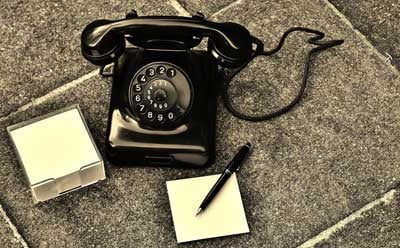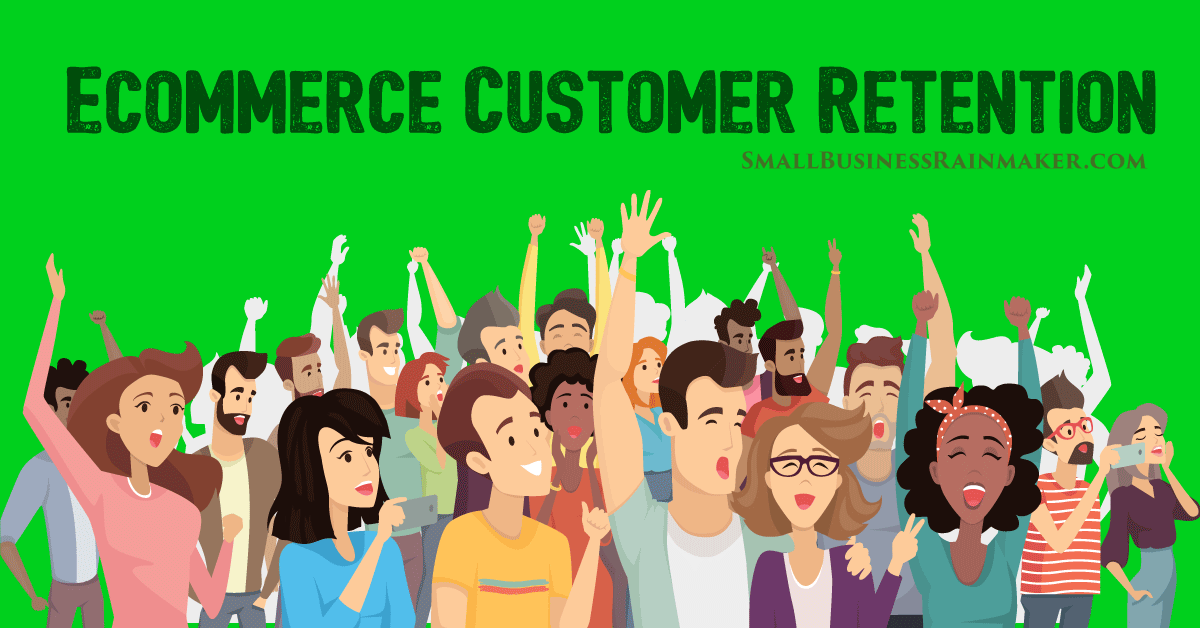If my experience is any indicator, small business customer service is off track. Bad experiences outweigh the good ones. What turns them “bad” is typically some slice of ordinary human behavior gone slightly awry. A Harvard Business Review article reveals some surprising findings that confirms my suspicions.
 They write,
They write,
“Although customer service can do little to increase loyalty, it can (and typically does) do a great deal to undermine it.”
That’s worth reading again. They continue,
“…loyalty has a lot more to do with how well companies deliver on their basic, even plain-vanilla promises than on how dazzling the service experience might be."
Put another way, if your business can simply avoid doing anything bad during customer interactions, and can simply do the ordinary things a customer expects, you’ll lose fewer customers. You’ll outperform those hot, trendy companies who work vigorously to “delight customers” and “exceed expectations”.
The customer service experience is the most critical factor in customer retention, say the authors. “We buy from a company because it delivers quality products, great value, or a compelling brand. We leave one, more often than not, because it fails to deliver on customer service.”
You can have the best product or brand in your business niche, with millions of dollars invested in product, research, marketing, and sales. Yet a frown on an employee’s face can cost you a customer, for life.
Many customer service skills are soft skills that include common courtesy and etiquette. None of them take much skill to implement. Primarily they require mindfulness.
Most of us grew up with manners and intuitively know what’s right, but we’re human. When you add work pressure, or a belligerent customer, or feelings of defensiveness and inadequacy, manners and civility can evaporate. I’m certainly guilty of losing my cool under pressure.
Below are 17 simple, free things that any solopreneur or small business can do to make the customer experience better. These ordinary, “plain-vanilla” items are sure-fire ways to increase your customer retention.
1) Speak slowly and clearly when talking with a customer.
You may have said a phrase ten thousand times, but if I’m a new customer in your shop, it’s the first time I’m hearing it. Tell me slowly.
I don’t know how many times I’ve listened to a restaurant waiter or waitress race inaudibly through a list of specials. I stop listening. Similarly, I’ve walked into a busy restaurant for the first time, trying to get the lay of the land and find the hostess, or the bathroom. When I ask a question of an employee to get my bearings, they’ve been known to rattle off a few unintelligible words and walk away. Left wondering, I’m more inclined to leave and try the next place down the road.
Take a breath, engage the customer fully, and speak clearly. Sometimes it only takes a few seconds.
2) Answer emails promptly.
The other day I went to an ecommerce site, credit card in hand, to buy a gift card for their service. I couldn’t find the gift card page which just a few weeks prior, was prominently featured on the home page. I eventually found a link on their FAQ page which no longer worked. So, I emailed the company and got no response after a couple of days. OK, email’s get lost so I then filled out the contact form on their site and got an auto-reply saying they’d be in touch right away.
15 days later I got a one-line response: “We can sell you store credit but if you click on the link above you'll see that we don't currently sell gift cards.”
Obviously, I’m not waiting, card in hand, for 15 days. If it takes that long for them to respond when I’m standing ready to give them money, how long would it take were I to encounter a problem after a purchase! No thanks. (More on their one-line response below.)
3) Return phone calls promptly.
Last winter I needed to replace my snow-plow guy. (This seems to be an annual occurrence but that’s another whole story about customer service.) I called three companies. Only one called back—about a week later. In the meantime, I hired someone else.
 This kind of poor phone etiquette seems to be common in the small business trades, especially solo operations. I can cite numerous personal instances where electricians, contractors, plumbers, and handymen simply don’t return phone calls at all. They don’t have a system in place to respond. Nor do they know they should have a system or process in place. Then they wonder why they live a feast or famine lifestyle without any business growth.
This kind of poor phone etiquette seems to be common in the small business trades, especially solo operations. I can cite numerous personal instances where electricians, contractors, plumbers, and handymen simply don’t return phone calls at all. They don’t have a system in place to respond. Nor do they know they should have a system or process in place. Then they wonder why they live a feast or famine lifestyle without any business growth.
Unless you’re the government or some other monopoly who doesn’t care, a fast phone response is a no-brainer.
4) Answer the phone properly.
Since we’re on the subject of telephones, answering with “Yeah?” or “Yo!” doesn’t cut it. And “yeah,” I’ve experience this more than once. It’s easy to script a nice, welcoming response such as, “ABC Hardware, this is Andre. How can I help you?” Also, as mentioned above, speak clearly and slowly.
5) Smile.
There is incredible power in the simple smile. One time as I waited to get my hair cut, I watched a frowning woman stomp around the shop putting things away.
 She was just doing her job, but my first impression was that she was an angry person. For all I knew she was happy, but the air in the room was filling with tension and uncertainty.
She was just doing her job, but my first impression was that she was an angry person. For all I knew she was happy, but the air in the room was filling with tension and uncertainty.
Was she the boss? Was she upset at one of the employees? If so, hopefully it wasn’t at the woman who was soon to be cutting my hair! It left me feeling uneasy. It’s not a feeling that inspires customers to return.
After the haircut, this same woman was at the front desk, solemnly collecting my money and scheduling my next appointment. As I’m preparing to leave, she smiled broadly, shook my hand, and said, “Thank you so much! See you in a few weeks!” with warmth and sincerity.
Wow. What a difference a smile makes! It was like a new person had magically appeared. Yet all she had done was smile. It instantly transformed feelings of tension, unease, and uncertainty into relaxation, friendliness, and warmth.
6) Respect your posted hours.
Employees should never show displeasure at a customer coming in a few minutes before posted closing time. Sure, I understand the desire to go home. However, the owner and employee mindset should be one of gratitude—grateful to have a place to work, grateful that customers are still coming in.
There’s a local coffee and donut shop that closes at 9 p.m. More than once, I’ve was there around 7:30 and it looked like they had already closed. Trash was piled in the middle of the floor behind the counter, machines were apart, customers had to wait for coffee, and the high school kids manning the counters were clearly more interested in getting out of there than waiting on customers.
This shows disrespect for the customer and undermines any chance of customer satisfaction. “Yes, we’re open but you’re not the priority now.” You can’t do that and expect to have happy customers. And you’ll never exceed their expectations.
7) Say “Please,” “Thank You,” and “You’re Welcome.”
Manners should not be forgotten. It’s sad to say this, but manners might have to be taught. If you prefer, call it “customer service” training. These simple words go incredibly far in creating a good customer experience.
8) Always be nice.
A dash of patience, tolerance, and calmness also helps. Even if the customer has none of these characteristics, you’ll look like a hero when all is said and done. When you maintain a nice, calm, yet commanding presence, you avoid damage to the customer relationship. In that sense, you’ll have exceeded customer expectations, especially if they’re expecting you to fight back.
If you have a hard time being nice in a combative situation, just tell yourself that the client is human too. He or she’s obviously having a bad day. Maybe they’re not well, physically or emotionally. Maybe something awful happened at home or work. You have an opportunity to transform their bad day into a good one as long as you remain nice.
Nice guys do indeed finish first.
9) Respond to problems.
Never ignore a problem brought to your attention. If you don’t know the answer, tell the customer you don’t know but that you’ll investigate and get back to them. Always give them a specific time frame for a response. For instance, “I’ll get back to you before 5 p.m. today.”
If you can’t solve a customer problem, tell them so. Impart calmness and confidence. Sometimes a customer just needs a little reassurance when they’re in the midst of something they might see as an emergency.
10) Know how to respond to customer complaints.
What’s the difference between a problem and a complaint? A problem can usually be resolved. A complaint happens after the problem is not resolved or after its handled poorly. By the time a problem escalates to the complaint stage, it requires more care and finesse than the problem itself.
Everyone in the company who meets with customers should know how to respond positively to a complaint. When you simply acknowledge the customer’s dissatisfaction, it goes a long way to soothing frayed nerves.
As with other problems, if you don’t know how to resolve a complaint, tell the customer you will get someone to help them right away. Don’t say, “Sorry, I’m not the right person,” or “I don’t know.”
Mistakes happen, and clients complain. If it happens once it could just be an employee glitch. If it happens two or more times, then it’s likely the fault of your system or process. When problems, mistakes, and complaints recur, change the process.
11) Know your products.
I went to my local Staples to get staples for a stapler I previously purchased there. It used a special flat-form staple different from conventional staples but still fairly common. I thought I’d be in and out in a minute.
I couldn’t find them in the store, so I asked. The clerk had no idea what I was talking about. He asked someone else who also had no knowledge of the product but who was willing to look for them. Ten minutes and a few employees later, we found them.
Now this won’t stop me from going there because I’ve had many great customer service experiences and only one dubious incident. It just illustrates the point and gives me a bit of irony to work with.
If I was a new customer, or an old one who didn’t like the store so much, that would have been my last visit. Lack of product knowledge prevents sales and costs customers.
12) Don’t let the customer get away.
Let’s get back to the gift card example in #2 above. Here I was, ready to hand over money to this company for a gift card. (It would have been a recurring one, too.) Their response was lame. I already knew the link didn’t work so that bit of info wasn’t helpful. They offered a store credit, but I have no idea what that means. How does the recipient in another state redeem it? How do I purchase it? How long is it good?
Instead, they let me get away. First, they made me wait for fifteen days. Now they were making me work hard to figure out how to buy their product. Had they responded promptly with something like, “I’m sorry about the gift cards, but we stopped selling those. However, I can set you up with a store credit that works the same way. Here’s how…”
They had me on the line. A prompt and helpful response could have still reeled me in to try their service.
13) Listen to the customer first.
 Don’t just launch into your spiel. You may not need it if you listen to what the customer is telling you. On many occasions I’ve had to stop a salesperson, whether on the phone or in a retail store. As the potential customer, this makes me feel less cozy about doing business with you. It sours a potentially good interaction and reduces the chance of closing the sale.
Don’t just launch into your spiel. You may not need it if you listen to what the customer is telling you. On many occasions I’ve had to stop a salesperson, whether on the phone or in a retail store. As the potential customer, this makes me feel less cozy about doing business with you. It sours a potentially good interaction and reduces the chance of closing the sale.
As the old saying goes, “You have two ears and one mouth. Listen twice as much as you speak.”
14) Be confident.
Whatever your business, you’re a specialist in something. It’s disconcerting to go into a business and hear, “Well, umm, I’m not really sure what we can do.”
Years ago, there was a conveniently located electrical vendor I tried to use in my job at the time. I’d go in with an electrical part that needed replacing. They’d get a puzzled look on their face, hand the part back and say, “Try somewhere else.” Not a specific recommendation of where to try, just a general brush-off. After three or four such incidents, of course I stopped trying.
This is related to product knowledge. As a specialist, you should know where to send clients who request something outside your expertise. In those areas where you can serve a client, then all your employees should exude confidence on that topic.
You don't have to know everything. You just have to make the customer feel confident that you'll be able to help them, that they'll leave your shop better off than when they entered.
15) Be creative and flexible - Deliver the 'Big Salad'
There is a Seinfeld episode in which Elaine asks for a “big salad” at a restaurant where they don’t usually dine. (You can watch the video clip below.) After some back and forth discussion about what constitutes a big salad, the waitress snidely says, “I can bring you two small salads.” Elaine asks, “Could you put it in a big bowl?” The waitress answers, “We don’t have big bowls.”
Customers frequently ask for things outside the norm for your business. There are two reasons you shouldn’t ignore them.
a) Such requests can be perfect opportunities to create new products or services.
b) A flexible, creative response solidifies a customer relationship and promotes referrals. When a business does a little something extra for me, I appreciate it, remember it, and spread the word.
16) Take responsibility for mistakes.
If you’re talking to a customer, you’re on the front line representing the whole company. Don’t blame a problem on someone or something else. An “I’m sorry” goes a long way to soothing frayed nerves and boosting good will. It’s subtle, but important.
For example, a technician recently completed annual maintenance on the oil burner. In the cold of the morning it was discovered that two of the heating zones stopped working. He returned within hours to fix it. The problem was that he inadvertently pulled out a wire during maintenance. I give him credit for admitting it.
Yet his matter-of-fact confession was made as if such a mistake were to be expected. Now it wasn’t a big inconvenience and all’s well that ends well. But an “I’m sorry” would have strengthened the relationship with that company and that technician.
In a culture where apologies seem to be unfashionable, here’s an even better way to handle it. Try, “Thanks for your patience with my mistake.” It puts a positive spin on, accepts responsibility, and makes both parties grateful for the interaction.
17) Respond with deliberation and not emotion.
The customer might be wrong, even unpleasant and disrespectful. Whatever you do, don’t react based on your emotions, which are likely to be in turmoil. If you’re angry, don’t lash out with righteous anger, no matter how good it might feel or how “right” you are. As a good friend once advised, “Do you want to be right, or do you want to be happy?”
Our focus during a response should be, “Is my reply going to help the other person? Is it going to solve the problem?” If not, we might be reacting poorly.
This is where customer service training helps. You can learn measured, scripted responses to a variety of situations. Once you defuse a potential conflict, you can work on fixing the problem and keeping the customer. And if the end result is that you need to “fire” a customer, you can do it with grace.
By all means we should continue to work on delighting customers and exceeding expectations. But the higher priority should be a focus on the basics. It has a much bigger positive impact on customer retention and the bottom line.
What little things do you and your staff do to promote customer satisfaction? Share with us in the comments below!
If you like this article, please share with your colleagues using the social share buttons on the left.















Leave a comment